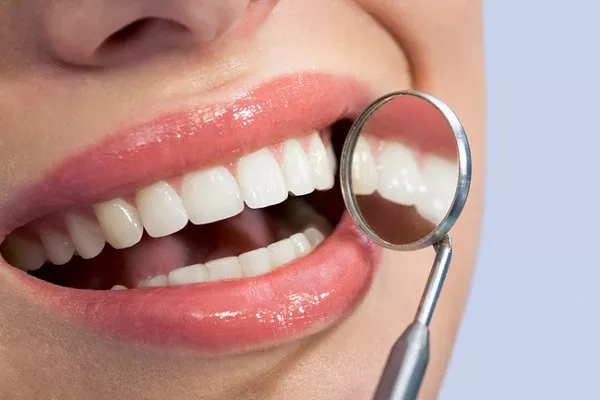Gingivitis is a common yet concerning oral health issue that affects a large portion of the population. With increasing interest in natural and home remedies, baking soda has emerged as a potential solution for managing and possibly even curing gingivitis. This article delves into the definition of gingivitis, the role of baking soda in oral health, scientific evidence supporting its use, proper usage instructions, dental recommendations, limitations, prevention tips, and alternative treatments.
Definition of Gingivitis
Gingivitis is a form of gum disease characterized by inflammation of the gums. It is primarily caused by the buildup of plaque, a sticky film of bacteria that forms on the teeth. Plaque produces toxins that irritate the gums, leading to the symptoms of gingivitis. If left untreated, gingivitis can progress to periodontitis, a more severe form of gum disease that can result in tooth loss.
- Symptoms of Gingivitis
- Red, swollen gums
- Bleeding gums, especially during brushing or flossing
- Bad breath (halitosis)
- Tender or sensitive gums
- Receding gums
Causes of Gingivitis
- Poor oral hygiene leading to plaque buildup
- Smoking or chewing tobacco
- Diabetes
- Certain medications that reduce saliva flow
- Hormonal changes, such as those during pregnancy
- Poor nutrition, including vitamin C deficiency
Role of Baking Soda
Baking soda, also known as sodium bicarbonate, is a common household item that has been used for various health and cleaning purposes for decades. Its role in oral health, particularly in managing gingivitis, is due to several beneficial properties.
Properties of Baking Soda
Abrasive Nature: Baking soda has a mild abrasive quality that helps remove plaque and surface stains from teeth without damaging the enamel. This mechanical action aids in reducing the buildup of plaque, a primary cause of gingivitis.
Neutralization of Acids: Baking soda is alkaline, meaning it can neutralize acids in the mouth that are produced by bacteria. This helps maintain a balanced pH level in the mouth, reducing the risk of bacterial growth and subsequent gum inflammation.
Antibacterial Properties: Baking soda has been shown to have antibacterial properties that can help reduce the number of bacteria in the mouth, further aiding in the prevention and management of gingivitis.
Odor Neutralization: By neutralizing acids and reducing bacterial load, baking soda helps combat bad breath, a common symptom of gingivitis.
Scientific Evidence
Several studies have investigated the effectiveness of baking soda in oral care, particularly in reducing plaque and inflammation associated with gingivitis.
Research Findings
Plaque Reduction: A study published in the Journal of Clinical Dentistry found that toothpaste containing baking soda was more effective at removing plaque than non-baking soda toothpastes. The mild abrasiveness of baking soda aids in the mechanical removal of plaque without harming the enamel.
Gum Health Improvement: Another study in the Journal of Periodontology showed that participants who used a baking soda toothpaste experienced significant improvements in gum health, including reduced inflammation and bleeding.
Antibacterial Action: Research has demonstrated that baking soda has antibacterial properties that can help reduce the bacterial load in the mouth. A study in the International Journal of Dental Hygiene found that rinsing with a baking soda solution significantly reduced bacterial levels in the oral cavity.
How to Use Baking Soda
Incorporating baking soda into your oral hygiene routine can be done in several ways. Here are some methods recommended by dental professionals:
As a Toothpaste Additive
Mix with Toothpaste: Sprinkle a small amount of baking soda on your regular toothpaste before brushing. Brush your teeth as usual for about two minutes, making sure to cover all surfaces.
Baking Soda Paste: Create a paste by mixing one teaspoon of baking soda with a few drops of water until it forms a thick consistency. Use this paste to brush your teeth, focusing on the gum line and areas with plaque buildup. Rinse thoroughly with water after brushing.
As a Mouth Rinse
Baking Soda Solution: Dissolve half a teaspoon of baking soda in a glass of warm water. Use this solution as a mouth rinse, swishing it around your mouth for about 30 seconds before spitting it out. This can be done once or twice daily to help reduce bacteria and neutralize acids.
Gum Massage
Direct Application: Apply the baking soda paste directly to your gums using a clean finger or a soft toothbrush. Gently massage the paste into the gums and leave it on for 1-2 minutes before rinsing with water. This can help reduce inflammation and soothe irritated gums.
Dental Recommendations
While baking soda can be beneficial for managing gingivitis, it should be used as part of a comprehensive oral hygiene routine. Here are some recommendations from dental health professionals:
Comprehensive Oral Hygiene Routine
Brush Twice Daily: Brush your teeth at least twice a day using a fluoride toothpaste. Consider using a toothpaste that contains baking soda for added benefits.
Floss Daily: Flossing helps remove plaque and food particles from between the teeth and along the gum line, areas that toothbrushes cannot reach.
Use Mouthwash: An antibacterial mouthwash can help reduce bacteria and maintain oral hygiene. Look for mouthwashes containing ingredients like chlorhexidine or essential oils.
Regular Dental Check-Ups: Visit your dentist regularly for professional cleanings and check-ups. Your dentist can remove tartar, a hardened form of plaque that cannot be removed by brushing alone, and monitor your gum health.
Limitations and Precautions
While baking soda is generally safe for use in oral care, there are some limitations and precautions to consider:
Abrasiveness: Despite its mild abrasive nature, excessive use of baking soda can wear down enamel over time. It is essential to use it in moderation and not to apply too much pressure while brushing.
Sensitivity: Some individuals may experience increased tooth sensitivity when using baking soda. If you notice any discomfort, reduce the frequency of use or consult your dentist.
Not a Substitute for Professional Care: Baking soda should not replace regular dental visits or professional treatments. It is an adjunct to, not a replacement for, professional dental care.
Allergies and Reactions: Although rare, some people may have an allergic reaction to baking soda. Discontinue use if you experience any adverse effects such as swelling, redness, or itching.
Prevention Tips
Preventing gingivitis involves maintaining good oral hygiene and making healthy lifestyle choices. Here are some tips to help prevent gingivitis:
Regular Dental Check-Ups
- Schedule regular visits to your dentist for cleanings and examinations. Professional cleanings remove tartar and monitor your oral health to catch any early signs of gum disease.
Proper Brushing Techniques
- Use a soft-bristled toothbrush and fluoride toothpaste.
- Brush at a 45-degree angle to the gums to effectively remove plaque.
- Replace your toothbrush every three to four months or sooner if the bristles are frayed.
Daily Flossing
Floss at least once a day to remove plaque and food particles from between your teeth and under the gum line.
Healthy Diet
- Eat a balanced diet rich in fruits, vegetables, and whole grains.
- Limit sugary snacks and beverages that can contribute to plaque formation.
Avoid Tobacco Products
Smoking and chewing tobacco are major risk factors for gum disease. Quitting these habits can significantly improve your oral health.
Alternative Treatments
In addition to baking soda, there are other home remedies and clinical treatments available for managing gingivitis:
Home Remedies
Salt Water Rinse: Rinsing with a salt water solution can help reduce inflammation and promote healing of the gums.
Aloe Vera: Applying aloe vera gel to the gums can soothe irritation and reduce inflammation due to its antibacterial and anti-inflammatory properties.
Tea Tree Oil: Tea tree oil has antimicrobial properties. Adding a few drops to your toothpaste or diluting it in water for a mouth rinse can help combat gum disease.
Clinical Treatments
Scaling and Root Planing: A deep cleaning procedure performed by a dentist or hygienist to remove plaque and tartar from below the gum line and smooth the tooth roots.
Antibiotic Therapy: In severe cases, antibiotics may be prescribed to treat the infection. This can include oral antibiotics or antibiotic gels applied directly to the gums.
Laser Therapy: Laser treatment can be used to remove infected gum tissue and promote healing.
Professional Dental Products
Antibacterial Mouthwashes: Mouthwashes containing chlorhexidine or essential oils can help reduce bacteria and inflammation.
Fluoride Treatments: Professional fluoride treatments can strengthen enamel and reduce the risk of decay and gum disease.
Conclusion
Baking soda can be an effective tool in the management and prevention of gingivitis due to its abrasive, antibacterial, and acid-neutralizing properties. When used correctly and as part of a comprehensive oral hygiene routine, it can help reduce plaque and inflammation, contributing to healthier gums. However, it is essential to use baking soda in moderation and not as a replacement for professional dental care. Regular dental check-ups, proper brushing and flossing techniques, and a healthy lifestyle are crucial for maintaining optimal oral health and preventing gingivitis. If you have persistent or severe symptoms, it is important to seek advice from a dental professional to ensure proper treatment and care.
FAQs about Gingivitis and Baking Soda
1. Is baking soda good for gingivitis?
Yes, baking soda can be beneficial for gingivitis. Baking soda has antibacterial properties that can help reduce the bacteria causing gum inflammation. Additionally, its mild abrasive nature aids in removing plaque from teeth and gums, which is a common cause of gingivitis.
2. How do I get rid of gingivitis ASAP?
To address gingivitis quickly, follow these steps:
Brush and Floss Regularly: Brush your teeth at least twice a day and floss daily to remove plaque and food particles.
Use an Antibacterial Mouthwash: Rinse with an antibacterial mouthwash to reduce bacteria in your mouth.
Baking Soda Paste: Apply a baking soda paste (see instructions below) to your gums to help reduce inflammation.
Professional Cleaning: Visit a dentist for a professional cleaning to remove hardened plaque (tartar) that cannot be removed by regular brushing.
Maintain Oral Hygiene: Continue maintaining good oral hygiene to prevent recurrence.
3. How to make baking soda paste for gums?
Making a baking soda paste is simple:
Ingredients: You need baking soda and water.
Preparation: Mix a teaspoon of baking soda with a few drops of water to form a thick paste.
Application: Apply the paste to your gums using a clean finger or a soft toothbrush. Gently massage it into your gums and leave it on for 1-2 minutes.
Rinse: Rinse your mouth thoroughly with water to remove the paste.
Frequency: Use this paste once daily until your symptoms improve.
4. Is soda bad for gingivitis?
Yes, soda can be detrimental to gingivitis. Most sodas contain high amounts of sugar and acids, which can contribute to the development of plaque and bacteria in the mouth. This can worsen gingivitis and lead to further gum inflammation and tooth decay. It’s best to avoid or limit soda consumption and opt for water or other sugar-free beverages to protect your gums and overall oral health.
Maintaining good oral hygiene practices, such as regular brushing, flossing, and using mouthwash, along with dietary choices that support oral health, can significantly improve and prevent gingivitis. If symptoms persist, seeking professional dental advice is recommended.
You Might Be Interested In
































